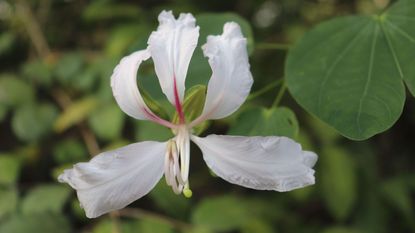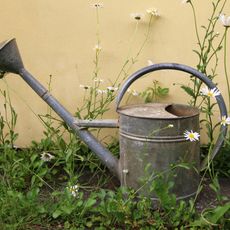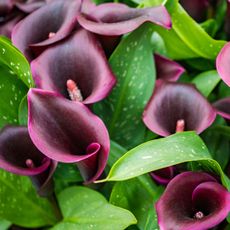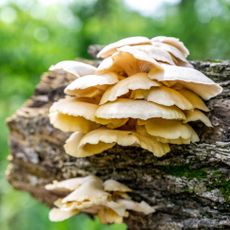When Orchid Tree Flowers Don’t Appear: How To Encourage Bauhinia Blooms
If you don’t see orchid tree flowers straight away, don’t panic. We show you how to get savvy with common orchid tree problems – and how to bring on the bauhinia blooms


When orchid tree flowers don’t appear, it’s easy to become concerned. Orchid trees are selected for their ornamental appeal, and their blooms are a major part of this. So it’s understandable that a no-show will give rise to alarm. But it doesn’t mean your tree is in trouble, or that it will never flower.
Quite often, there are simple ways to make adjustments. If you are growing orchid trees that fail to flower, you just need to figure out what might be going on. That way, you can address any orchid tree problems as quickly as possible.
Healthy Orchid Tree Flowers and Foliage
The white orchid tree (Bauhinia aculeata) is also called the bauhinia tree. This hardy bauhinia is generally deciduous and grows to 30ft (10m) tall. Its ascending branches are elegantly twisted. These branches dip at the end and, during the growing season, they are filled with large, dark, two-lobed leaves.
White orchid trees are vase-shaped patio trees that double as shade trees. They fit well in a mixed shrubbery border in full sun. However, while orchid tree leaves are dual-lobed, they are otherwise not showy. If you are wondering why these bauhinia trees are called ‘orchid trees’ in the first place, it’s because of the bauhinia flowers. In healthy trees, these look a lot like large orchids.
When Should Orchid Trees Flower?
Understanding when orchid trees bloom is key to being able to identify potential flowering issues. Bauhinia flowers cover the tree branches from spring through summer, evolving into flat, brown seed pods up to 12in (30cm) long. So if you don’t see flowers on the tree in fall and winter, this may not necessarily be because of underlying orchid tree problems. Just chalk it up to the seasons and wait until spring.
Another important note with flowering is that it takes several years of growth before the bauhinia is mature enough to bloom. Before it can flower, a transplanted tree has to develop new root growth. So if your tree is relatively new to your backyard, just wait. But if it is spring and other plants are blooming, you’ll have to dig a little deeper to determine why a mature orchid tree isn’t blooming.
Cultural Care For Orchid Trees
If your orchid tree isn’t blooming in spring or summer, the next thing to review is whether the tree is getting its needs met. Generally, the orchid tree is a full-sun tree and must have at least partial sunlight to thrive.
Gardening tips, videos, info and more delivered right to your inbox!
Sign up for the Gardening Know How newsletter today and receive a free download of our most popular eBook "How to Grow Delicious Tomatoes."
It is fairly tolerant regarding soil type, and accepts clay, sand, or loam. Orchid trees manage fine in acidic or slightly alkaline soil. However, it is wise to check soil drainage and make sure yours is well draining. The good news is that these trees are drought-tolerant, and somewhat salt-tolerant.
Checklist for Better Blooming
The most frequent culprits when it comes to orchid trees not blooming are cultural care matters. Fortunately, some of the key orchid tree problems are easily remedied:
- Insufficient sunlight: Access to ample sunshine is one of the key requirements for these types of trees. Make sure your orchid tree receives at least six hours a day.
- Too-cold winters and late spring frosts: Orchid trees are only hardy to zone 9. If late frosts are forecast, protect trees with horticultural fleece or similar.
- Nitrogen-heavy fertilizer: Too much nitrogen causes trees to produce more leaves and fewer flowers. A balanced fertilizer once a month is fine in the growing season.
- Excess trimming: Hasty or overzealous pruning can cause stress. Wait until after the flowering season before pruning. It’s best not to prune at all until the tree establishes.
- Overwatering: You can usually tell if this is the cause if your tree’s leaves are also turning yellow. A deep watering once a week is better than constant sprinklings.
Keep Orchid Tree Flowers Healthy
You may also find that you get early signs of blooms, only for the orchid tree flowers to shrivel. If this happens, keep a close eye on the weather. Extended bouts of heat or dry weather could be the culprit.
Even though established orchid trees are drought-tolerant, they appreciate a little partial shade (preferably in the afternoon). Don’t be afraid to hydrate more frequently in longer hot, dry spells.

Teo Spengler has been gardening for 30 years. She is a docent at the San Francisco Botanical Garden. Her passion is trees, 250 of which she has planted on her land in France.
- Janey GouldingContent Editor
-
 Does Gardening Reduce Carbon Footprint Size?
Does Gardening Reduce Carbon Footprint Size?If you’d like to learn how to reduce your carbon footprint on the Earth, start with your garden activities and planting decisions.
By Bonnie L. Grant
-
 How To Use Less Plastic: 5 Ways To Go Greener In Your Garden
How To Use Less Plastic: 5 Ways To Go Greener In Your GardenData on how our overuse of plastic is harming the planet may leave you wondering how to use less plastic. Here are ideas for reduced plastic use in the garden.
By Teo Spengler
-
 Watering Daisies: How Often To Water Your Sun Loving Blooms
Watering Daisies: How Often To Water Your Sun Loving BloomsWhile it might seem straightforward, there is a knack to watering daisies correctly. We show you how to give your shastas, marguerites and gerberas the best hydration
By Tonya Barnett
-
 Best Moody Maroon Flowers: 8 Burgundy Blooms For A Moody Garden
Best Moody Maroon Flowers: 8 Burgundy Blooms For A Moody GardenGrowing maroon flowers may not be for the faint of heart, but it is a glorious way to add drama and impact – as well as lure pollinators to your plot. So why not go dark with these eight blooms?
By Tonya Barnett
-
 Growing Mushrooms On Logs: 5 Best Mushroom Varieties To Try
Growing Mushrooms On Logs: 5 Best Mushroom Varieties To TryYou’ll find growing mushrooms on logs is simple, enjoyable, safe and tasty – as long as you pick the right kinds! We reveal five of the best for an endless feast of fungi
By Janey Goulding
-
 Begonia Watering: How To Water Begonias (And When To Leave Them Alone!)
Begonia Watering: How To Water Begonias (And When To Leave Them Alone!)Improving the way you hydrate your begonias can have a major impact on their life expectancy and flowering quality. We explain how to get better at begonia watering
By Tonya Barnett
-
 How Often To Water Your Mums For Beautiful, Long-Lasting Blooms
How Often To Water Your Mums For Beautiful, Long-Lasting BloomsWatering chrysanthemums relies in part on whether your plants are in the garden or in a pot, but there is a knack to doing it well. We show you how often to water your mums for the best blooms
By Tonya Barnett
-
 Romantic Rose Varieties To Make Your Heart Flutter: 8 Best Roses For Romance
Romantic Rose Varieties To Make Your Heart Flutter: 8 Best Roses For RomanceRomantic rose varieties are plentiful – but if you are looking for a few of the ultimate selections for love, here are eight of the best rose cultivars you can try
By Tonya Barnett
-
 French Flowers To Add A Touch Of Romance To Any Garden
French Flowers To Add A Touch Of Romance To Any GardenFeeling love-struck is something that French flower enthusiasts have elevated to the level of an art form. Here we consider the most romantic French flowers you can grow
By Bonnie L. Grant
-
 Growing Geraniums In Containers For More Blooms In Small Spaces
Growing Geraniums In Containers For More Blooms In Small SpacesNo matter how small your yard or window space, there’s a place for a potted geranium. Make sure yours last for longer with this guide to growing geraniums in containers
By Janey Goulding